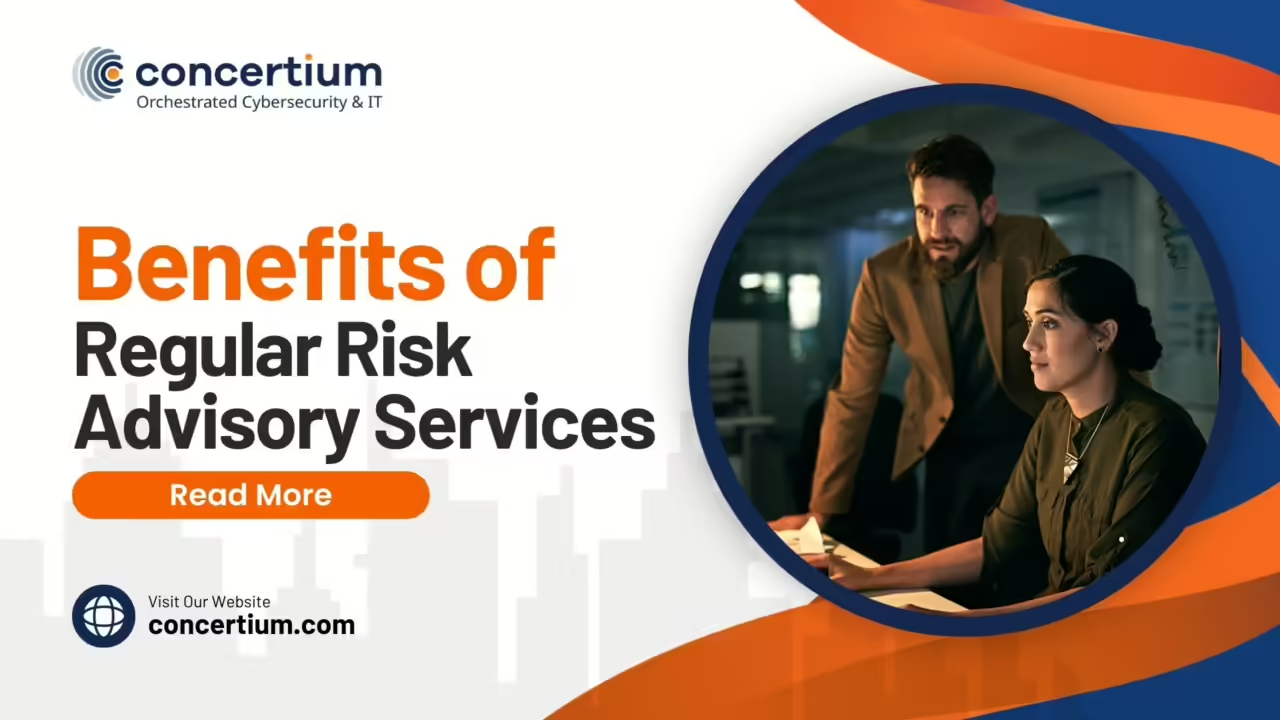Regular Risk Advisory Services
Risk advisory services are essential for modern businesses aiming to manage risk effectively. These services involve a comprehensive assessment of potential risks and the development of strategies to mitigate them. Regular risk advisory is not just a one-time activity; it’s a continuous process that helps organizations stay ahead of potential threats.
Regular risk advisory enables companies to identify emerging risks and respond proactively. By doing so, businesses can avoid costly disruptions and maintain compliance with regulatory requirements.
This article will delve into the multifaceted world of risk advisory services. We’ll explore their definition, benefits, and the critical role they play in safeguarding businesses. Additionally, we’ll discuss the tools and techniques used in risk assessments and provide insights on choosing the right risk advisory partner.
Understanding Risk Advisory Services
What are Risk Advisory Services?
Risk advisory services are professional services aimed at helping organizations identify, assess, and manage various risks. These services cover a broad spectrum, from financial and operational risks to cybersecurity threats and compliance issues. The primary goal is to provide businesses with a clear understanding of their risk landscape and actionable strategies to mitigate those risks.
There are several types of risk advisory services. Strategic risk advisory focuses on aligning risk management with business objectives. Operational risk advisory deals with risks arising from internal processes and systems. Additionally, cyber risk advisory helps organizations protect against digital threats, while compliance risk advisory ensures adherence to legal and regulatory standards.
By employing these services, businesses can enhance their overall risk management framework. They gain insights into potential vulnerabilities and receive expert guidance on how to address them. This proactive approach is essential for maintaining a resilient and agile business.
The Role of Risk Advisors
Risk advisors play a pivotal role in the risk management ecosystem. Their primary responsibility is to help organizations identify, analyze, and mitigate risks. These professionals possess deep expertise in various risk domains, including cybersecurity, financial risks, and compliance issues.
Professional risk advisors utilize advanced analytics and risk assessment tools to provide data-driven insights. They work closely with stakeholders to develop tailored risk management strategies. In addition, they ensure that risk management practices are integrated into the organization’s overall strategy, enhancing decision-making processes.
The importance of professional risk advisors cannot be overstated. They bring an objective perspective to risk management, helping businesses avoid bias and blind spots. Furthermore, their expertise in navigating complex regulatory landscapes ensures that organizations remain compliant and avoid legal pitfalls.
Common Risk Assessment Tools and Techniques
Risk advisors use a variety of tools and techniques to conduct comprehensive risk assessments. These methodologies provide a structured approach to identifying and evaluating risks. For instance, SWOT analysis (Strengths, Weaknesses, Opportunities, Threats) helps in understanding the internal and external factors impacting an organization.
In addition, Quantitative risk analysis utilizes statistical models to predict the likelihood and impact of risks. Tools like Monte Carlo simulations offer a probabilistic approach, providing a range of possible outcomes and their probabilities. Similarly, Qualitative risk analysis involves expert judgment to assess risks based on their severity and likelihood.
Moreover, risk advisors often employ specialized software for risk management. These tools offer features like risk mapping, scenario analysis, and real-time monitoring. By using these tools, organizations can gain a holistic view of their risk landscape and make informed decisions to mitigate potential threats.
Benefits of Regular Risk Advisory Services
Proactive Risk Management
Proactive risk management is essential for identifying potential risks early. By regularly engaging in risk advisory services, organizations can spot vulnerabilities before they become significant issues. For instance, regular cyber risk assessments can uncover weaknesses in a company’s digital defenses, allowing for timely interventions.
Implementing preventive measures is another key benefit. When potential risks are identified early, businesses can take steps to mitigate them. This could involve updating internal controls, enhancing data privacy measures, or revising compliance programs. These actions help organizations stay ahead of the competition by minimizing risk and ensuring continuity.
Above all, proactive risk management fosters a culture of awareness and preparedness. Employees become more vigilant, and processes are continuously refined to address emerging threats. This ongoing vigilance is crucial in today’s fast-paced business landscape, where new risks can emerge at any time.
Enhancing Decision-Making
Data-driven insights are invaluable for making informed decisions. Regular risk advisory services provide businesses with detailed risk assessments and data analytics. These insights help organizations understand their risk landscape and make strategic decisions accordingly.
Improved strategic planning is another benefit. With a clear understanding of potential risks, businesses can develop risk management strategies that align with their overall objectives. For instance, a company aware of its regulatory risk can implement measures to ensure regulatory compliance, avoiding legal issues and penalties.
Therefore, enhanced decision-making leads to better resource allocation and more effective risk management processes. Organizations can focus on areas that need attention, ensuring a balanced approach to risk and growth.
Cost Savings and Efficiency
Reducing unforeseen expenses is a significant advantage of regular risk advisory services. By identifying and addressing risks early, businesses can avoid costly disruptions. For example, timely interventions in supply chain risks can prevent expensive delays and maintain operational continuity.
Streamlining operations is another benefit. Risk advisory services help organizations optimize their processes by identifying inefficiencies and areas of improvement. This can lead to smoother workflows and increased productivity. For instance, a thorough vendor risk management program can streamline procurement processes, reducing delays and enhancing efficiency.
In addition, cost savings are realized through reduced risk exposure. By proactively managing risks, businesses can avoid financial losses associated with data breaches, compliance failures, and other issues.
Regulatory Compliance
Ensuring adherence to laws and regulations is crucial for any business. Regular risk advisory services help organizations stay compliant by continuously monitoring regulatory changes and implementing necessary adjustments.
Avoiding legal penalties is another key benefit. Non-compliance can result in hefty fines and legal actions. Regular risk assessments help organizations identify areas of non-compliance and take corrective measures promptly. For example, a company that stays updated on data privacy regulations can avoid penalties associated with data breaches.
Therefore, regular risk advisory services not only help in maintaining compliance but also build a reputation for reliability and trustworthiness among stakeholders.
Implementing Regular Risk Advisory Services
Establishing a Risk Advisory Framework
Establishing a risk advisory framework involves several key components. These include defining risk appetite, setting objectives, and identifying potential risks. The framework should also include processes for risk assessment, mitigation, and monitoring.
Steps to develop and implement the framework start with a thorough risk assessment. This involves identifying risks, evaluating their impact, and prioritizing them. After that, organizations should develop risk mitigation strategies and integrate them into their operations. Continuous monitoring and periodic reviews are essential to ensure the framework remains effective.
Therefore, a well-established risk advisory framework helps organizations manage their risks systematically and proactively.
Integration with Business Processes
Aligning risk advisory with business goals is crucial for its effectiveness. Risk management should not be an isolated activity but integrated into the organization’s overall strategy. This ensures that risk management efforts support the company’s objectives and enhance its resilience.
Continuous monitoring and adjustment are essential for maintaining effective risk management. Regular reviews and updates to the risk advisory framework ensure it remains relevant and responsive to changing conditions. For instance, incorporating insights from regular cybersecurity risk assessments can help organizations stay ahead of emerging cyber threats.
Above all, integrating risk advisory services into business processes helps create a risk-aware culture, fostering proactive risk management throughout the organization.
Choosing the Right Risk Advisory Partner
Key Factors to Consider
Experience and expertise are critical when selecting a risk advisory partner. Look for firms with a proven track record in providing risk advisory and consulting services. Their industry knowledge and technical skills will be invaluable in helping you manage your risks effectively.
Industry reputation and track record are also important. Choose a partner with positive reviews and testimonials from clients in similar industries. This ensures they understand your specific risk environment and can provide tailored solutions.
In addition, consider the firm’s approach to risk management. A partner that uses advanced analytics and data-driven insights will be better equipped to help you navigate complex risks.
Questions to Ask Potential Advisors
Evaluating their approach and methodology is crucial. Ask potential advisors about their risk assessment processes and the tools they use. Understanding their methodology will give you confidence in their ability to manage your risks effectively.
Understanding their fee structure is also important. Ensure there are no hidden costs and that the services provided align with your budget. Transparent pricing helps build trust and ensures a smooth working relationship.
Therefore, asking the right questions will help you choose a trusted advisor who can provide the expertise and support you need to manage your risks effectively.
What People May Also Ask
What is the main purpose of risk advisory services?
The main purpose is to help organizations identify, assess, and mitigate risks. This ensures business continuity and regulatory compliance.
How often should a business engage in risk advisory services?
It depends on the industry and risk environment, but generally, businesses should conduct risk assessments at least annually.
What industries benefit the most from risk advisory services?
Industries such as financial services, healthcare, and technology benefit significantly due to their complex risk landscapes.
How do risk advisory services differ from internal audits?
Risk advisory focuses on identifying and mitigating risks, while internal audits assess the effectiveness of controls and processes.
Can small businesses afford risk advisory services?
Yes, many firms offer scalable solutions tailored to the needs and budgets of small businesses.
Key Takeaways and Final Thoughts
In conclusion, regular risk advisory services offer numerous benefits, including proactive risk management, enhanced decision-making, cost savings, and regulatory compliance. These services help organizations identify and mitigate risks, ensuring long-term success and stability.
Therefore, businesses should consider integrating regular risk advisory services into their operations. By doing so, they can stay ahead of emerging risks and maintain a competitive edge. Above all, proactive risk management fosters a culture of preparedness and resilience.
Consider engaging a professional risk advisory partner to help you navigate your risk landscape and secure your business’s future.




